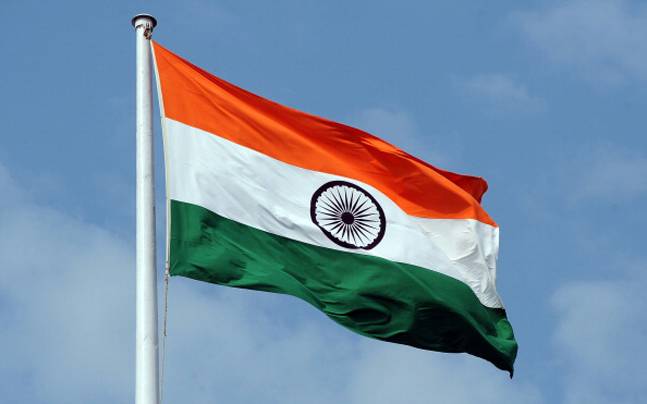Introduction
One of the paradoxes of India’s growth story, after economic liberalization was introduced in 1991, has been jobless growth. At its peak during the years 2004-2009, while the average GDP growth rate was 8.7%, the growth in employment was 0.1% only. The recently released India Unemployment Report published jointly by International Labour Organisation (ILO) and Institute of Human Development (IHD) has confirmed that this trend of jobless growth has continued from 2000-2023, despite Mr Modi’s promise in 2014 that 10 million additional jobs would be created every year. The Report, apart from addressing the disconcerting trends in unemployment, has also covered the educational and skill challenges and has suggested five missions that would need to be taken up in right earnest to address the most acute problem of India viz unemployment that confronts the youth in India today. The report has huge salience in our tryst to be truly developed under the laudable campaign for ‘Viksit Bharat’.
The Trends
It has brought out that the LFPR (Labour Force Participation Rate) has been plummeting from 61.6% in 2000 to 55.9% in 2012 and to 50.2% in 2019 at the height of pandemic. It has recovered to 55.2% by 2023, largely due to higher labour engagement in the agricultural sector. It also brings out how female labour force participation rate which had plummeted from 38.9% in 2000 to 24.5% in 2019 has now gone up to 32.8%, largely due to increase in self-employment in a series of missions like Mission Shakti and galvanization of Self-Help Groups. The female labour force participation rate is still much lower than male force participation rate of 77.2%. The report also brings out the data on underemployed percentage, which stands at 7.1%. It was Ragnar Nurkse who was the first to comment on this widely prevalent phenomenon of disguised employment in India, a phenomenon where too many people are engaged than what is required in a job, as in agricultural avocation in India, for want of employment opportunity in non-farm sector.
The Importance of Manufacturing
Prof Nicholas Kaldor brought out how higher the growth of manufacturing output, the more significant is the growth rate of economy’s product as a whole. It’s also widely recognized that the employment potential of the manufacturing sector is much higher than that of service sector because of its backward linkages with other sectors benefiting. The Report also brings out the sectoral trends of GVA (Gross Value Addition) and employment generation. For instance, it brings out how the GVA in manufacturing sector has gone up by 7.5% during 2000-2019, while additional employment generation has been only 1.7%. Infact, manufacturing which contributes 16% to the GDP accounts for only 12-14% of total employment.
In contrast countries which have adopted the manufacturing growth led growth model of Kaldor, like China, South Korea have big global manufacturing hubs which account for nearly 35% of GDP, engaging nearly 33% of the labour force. Taking a note of this, the National Manufacturing Zone (NMZ) Policy (2011) had accordingly set a target of increasing the share of manufacturing in GDP from 16% to 25% in a decades’ time, which will generate 10 million additional jobs a year. This pragmatic vision has neither been realized during Prime Minister Manmohan Singh’s decade long rule or Modi’s decade long tenure. Rostow had identified five stages of growth where the service sector follow the lead of manufacturing. India has leapfrogged into the service sector led growth, neglecting the importance of manufacturing as a creator of growth, employment and productivity.
The Services sector, which accounts for 57% of the GDP witnessed a growth of 7.5% during 2000-2019. With additional employment generation of only 2.9%. Though service aggregates like Ola, Uber and Amazon have generated additional employment in an innovative way, skill based manufacturing can really boost employment and harness the benefits flowing out of industry by embracing skills like AI, Robotics, IOT etc. The neglect of the SME segment in terms of access to capital at reasonable rate, technology, and skilled worker has been predominantly responsible for a stagnant manufacturing sector contributing to 16% of GDP and 14% to employment.
Informal Sector & Remuneration
The Report brings out how 66% of the increase in employment after 2019 is due to increase in self employment, with the share of regular work declining. The quality of employment in informal sector which accounts for 90% of employment is of poor quality. Wages and earnings are either stagnant or declining in these sectors The average monthly earning of self-employed is around Rs 11973 in 2022 as per the Report, while it is around Rs 19010 for regular workers and a measly Rs 8267 for casual workers, who constitute 30% of the workforce. The wage disparity between male and female worker is around 40% for casual labourers, in clear violation of the Constitutional mandate of equal work for equal pay for both men and women at Article 39(d) of our Constitution. Besides, 40% of regular workers and 52%of the casual workers did not receive daily minimum wage the wages of Rs 480 per day asper the report. Besides the production process is increasingly becoming capital intensive and labour saving.
Trends in Education & Skill
The Report brings out the trends in education and profile of youth employment and brings up interesting evidence. It brings out how, compared to 2000 when the illiteracy % was 29.55, 22.9% in higher secondary and 5% were graduates, the illiterate percentage has gone down to 5.4% in 2022 and those with higher secondary education and graduates has gone up to 43.6% and 14.7% respectively. While this is a welcome trend, its not matched by appropriate skill inculcation and vocational training. As per SKILL INDIA Report only 7% of the graduates are properly employable, as against 30% in China due to better skilling. The Report brings out how creation of training capacity in poor regions is particularly low and there is very low levels of socioeconomic inclusion. Apprentice training is low. Out of 1.2 lakh estimated, only 25000 offered apprenticeship. For entrepreneurship development, the report rightly flags the importance of access to funding, supporting regulatory and tax regime, education system that support entrepreneurial mindset and coordination between public, private and volunteer sector. The report recommends five missions viz production to be more labour intensive, improve quality of jobs, overcome labour market inequality, provide effective skills, create productive non-farm employment and supporting the SMEs.
The Way Forward
Quite clearly, transcending all political hype and obfuscation, the unemployment rate is increasing. While the total work force employed has increased from 382.3 million in 2001 to 487.4million in 2021, the working age population (15-64) has increase from 656 million to 950 million (2001-2021). The unemployment per year has been increasing from 0.39% to 0.44% .As per CMIE’s latest report, the overall unemployment percentage in 2023-24 is around 8% as against 7.4% in 2016-17. Of this men account for 7%, while female unemployment % is around 15%. Female unemployment percentage is much higher in urban areas at 20.5% as against 12.5% in rural areas. There are large interstate variations.
The Gross Capital Formation which was 34.3% during Manmohan Singh’s regime in 2011-12 has gone down to 28.9% in 2021-22, with the dip predominantly due to private sector investment, while public sector investment has remained constant at 8%. Despite all the hype regarding surge in FDI, the net FDI/GDP has gone down from 3.6% (2008) to 2.4% (2022). While in terms of overall GNP at PPP, India has clocked the fifth position globally, its per capita income is the lowest among G20 countries. Ray Dalio has developed a country power index where India’s low score of 0.29 is largely because of its low scores in education, innovation and technology and poor governance. In contrast China scores better in terms of quality of education, innovation & Technology and infrastructure. While India has made significant improvement in terms of infrastructure by earmarking 22% of Central government expenditure as against 12% during Manmohan Singh’s decade of governance, it has to pay increasing attention to quality of education, skilling and universal access to high end technology. Our growth strategy has to be manufacturing highly skilled, labour intensive. That will improve employability, remuneration and per capita income significantly. ‘Viksit Bharat’ should not only aim at our Global ranking in GDP at par with developed countries, it has to look beyond billowing billionaires to improve access to quality education, skilling, basic health care and nutrition for aspirational surging ordinary Indians, where we rate poorly as per Human Development Index (HDI), Group Hunger Index (GHI) etc. As Jeffrey Sachs, the driver of Millennium Development Goals (MDG) rightly observes: Our greatest illusion is that “a healthy society can be built around mindless pursuit of wealth”.





